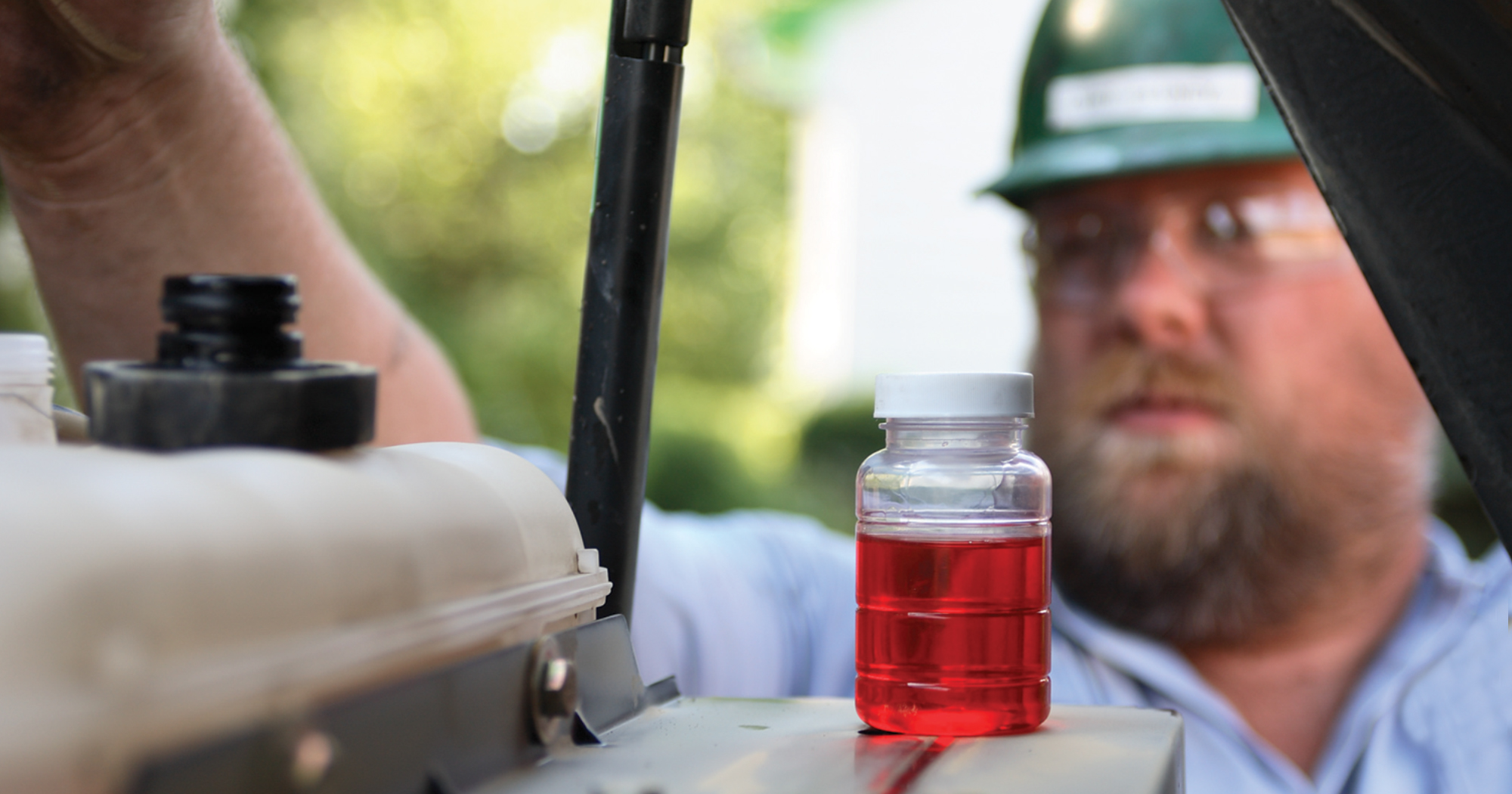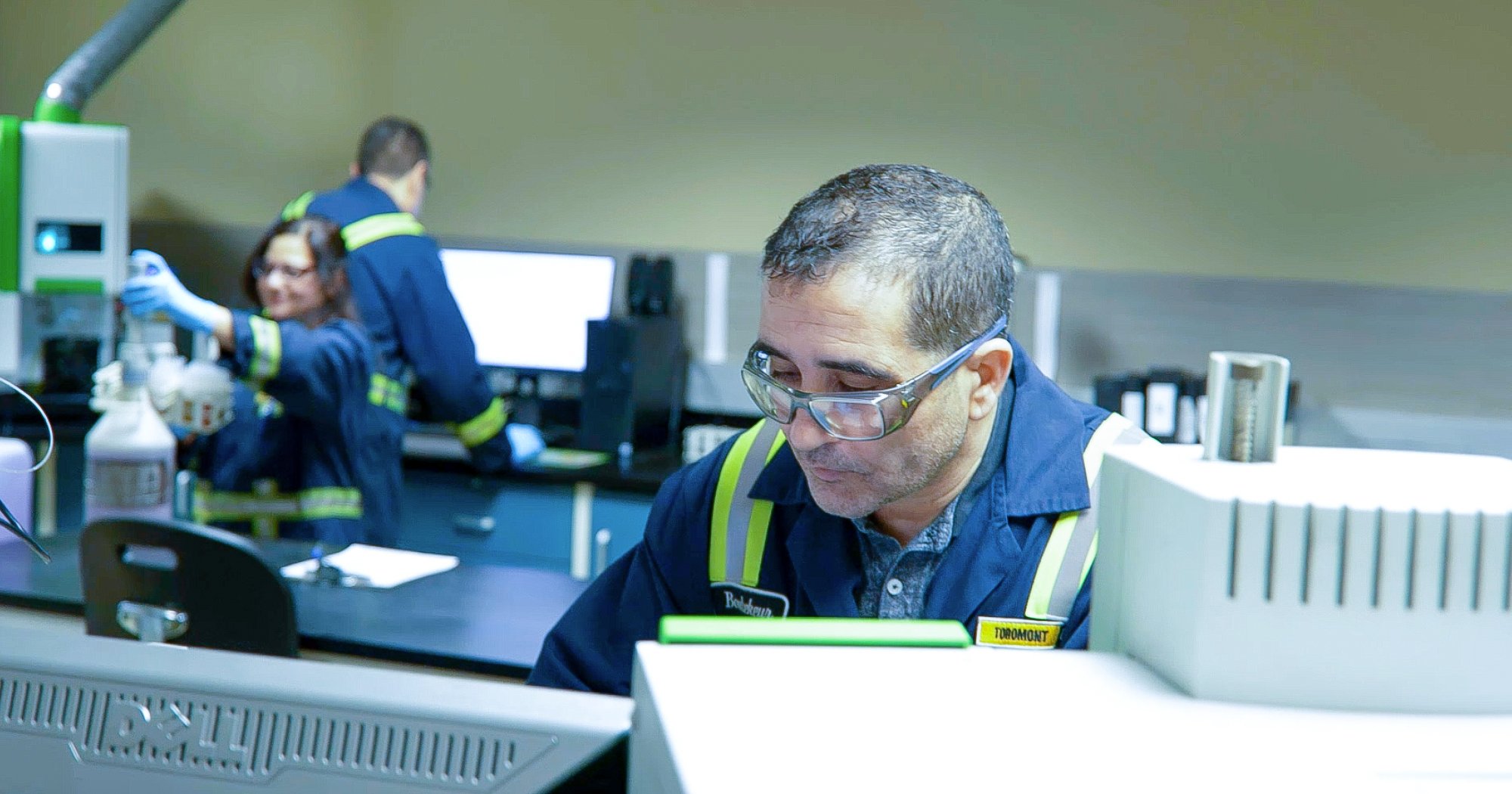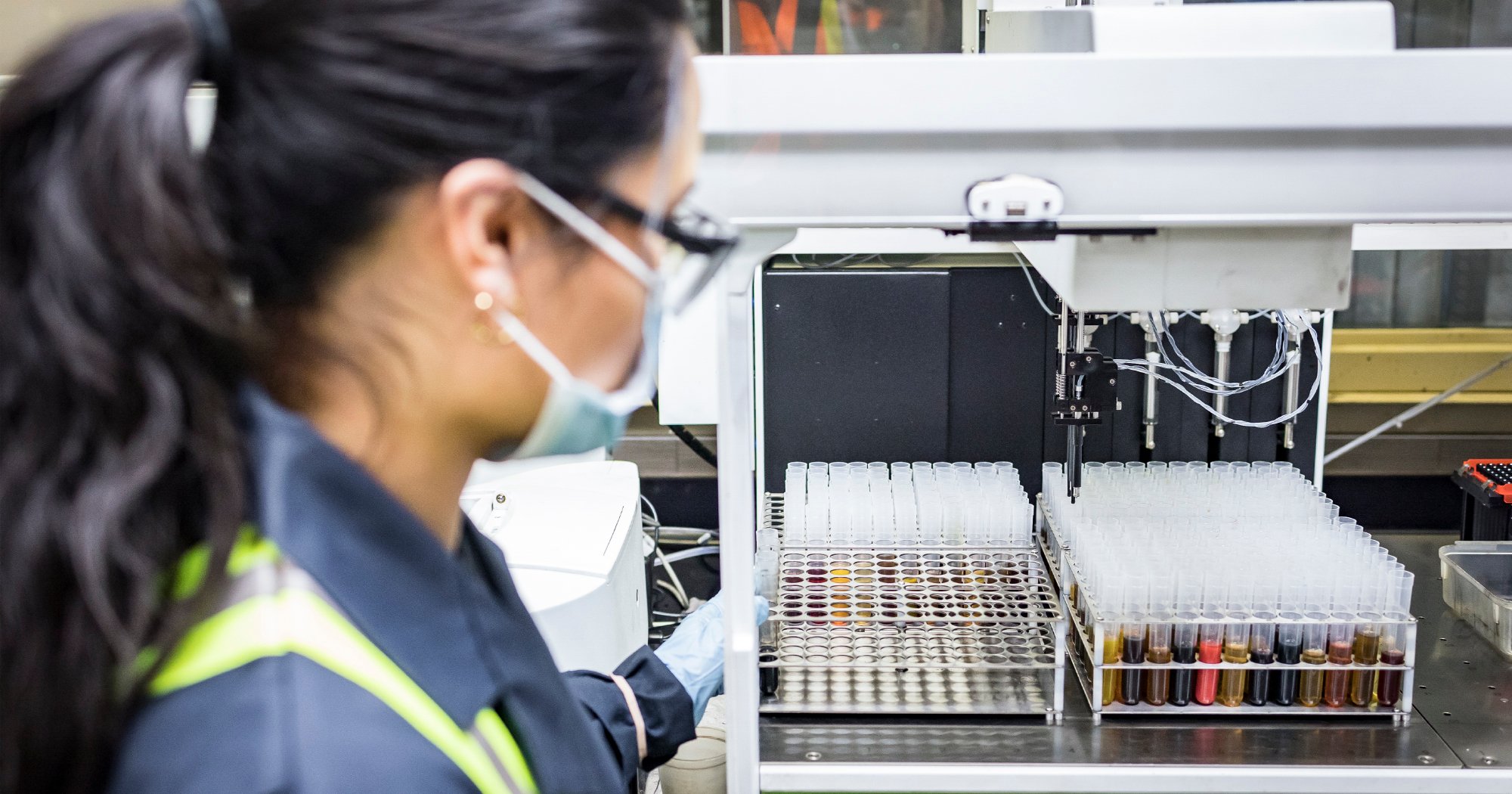
We’re committed to keeping your equipment moving. Enrolling in the S•O•S Services program is your assurance that you’ll get accurate analysis.
The Toromont S•O•S lab experts complete testing quickly and provide comprehensive maintenance advice in easy to understand reports. Make the commitment and get the benefits of working with the experts who know your Cat equipment best.
How to understand your S•O•S Oil Results:
Component wear rate analysis evaluates the wear taking place inside the lubricated compartment. Your S·O·S Analyst uses the results of elemental analysis and particle count tests to evaluate the wear. Trend analysis and proprietary wear tables are then used to determine if wear rates are normal or abnormal.
Elemental Analysis detects wear elements, oil additive package elements, and the elemental constituents of some contaminants. This analysis can detect particles up to about 10 microns in size. The Elemental Analysis results are reported in parts per million, ppm. What is ppm? Parts per million, or ppm, is used to express concentration of elements in oil or coolant. One particle of iron in 99,999 particles of oil or coolant is one ppm.
Particle Count analysis is used to evaluate particles larger than 10 microns and nonmetallic particles. Particle Count results are listed as an ISO code and a channel count. The Particle Count channel counts are reported in counts per milliliter of sample (counts/mL). The ISO code is a summarization of the channel count results. An increase in ISO code values could indicate an increase in wear or the presence of contaminants.
Oil Condition analysis is used to determine if the oil has degraded. Tests are done to look at the viscosity, oxidation, sulfation and nitration of the oil. All lubricated systems risk oxidation damage of the oil. Therefore, it is recommended that oil samples from all compartments be analyzed for oil condition. Your S·O·S Analyst uses established guidelines or trend analysis to determine if the oil has reached the end of its useful life.
Viscosity is a temperature-dependent characteristic of lubricants that describes how the oil will flow. Viscosity is usually measured at 100 degrees Celsius. At high operating temperatures, a lubricant must be able to maintain appropriate film thickness. If the viscosity becomes too low, wear will occur within the compartment. If viscosity is too high, the oil will not flow to areas needing lubrication.
Many diesel engine oils are designed with multi-grade viscosity characteristics. At low ambient temperatures, multi-grade oils have a lower viscosity to provide start up protection. Appropriate oil viscosity is needed at low temperatures, or the oil will not flow quickly enough to parts
needing lubrication. At normal operating temperatures, the multi-grade oils have a higher viscosity to protect moving parts.
Oxidation occurs in transmission, hydraulic, final drive and engine oils when oxygen molecules chemically join with the oil molecules. Oxidation causes:
- Increased viscosity
- Acid formation
- Deposit formation
Sulfur is present in diesel fuel. During combustion, fuel sulfur combines with water to form sulfuric acid. Modern diesel engine lubricants are designed to neutralize this acid. However, if these acids reach unacceptable levels, the lubricant will be degraded and corrosion will occur. This corrosion can attack:
- Valves
- Valve guides
- Piston rings
- Cylinder liners
Nitration occurs in all engine oils, but is generally a problem only in natural gas engines. Nitrogen compounds from the combustion process increase oil viscosity and reduce lubricating ability. Nitration may result in:
- Oil filter plugging
- Piston deposits
- Valve deposits
- Crankcase deposits
Oil Contamination tests are performed to determine if anything harmful has entered the oil. This analysis relies
on the results from the following tests: elemental analysis, soot, particle count, fuel dilution, water, and coolant. The
S·O·S Services program has guidelines for the level of contamination allowed in the various compartments of a Cat
machine.
Oil Identification is another very important part of the S·O·S oil analysis program. The wrong oil in a compartment can severely damage major components. Your S·O·S Analyst uses elemental analysis and viscosity results to identify key characteristics of the oils.

SOS Coolant Reports and Results
There are many different coolant choices on the market today. These coolants provide cooling system protection using different chemistries. Your S·O·S Analyst uses label information and color to determine type of coolant. This is one reason it is important to provide as much information on the coolant sample label as possible.
Boil and Freeze Protection
Ensuring the correct boiling and freezing point is important, no matter what climate the engine or equipment operates. Your S·O·S Analysts use Percent Glycol, Boiling Point and Freezing Point to monitor the ability of the coolant to provide adequate protection.
Glycol is the active ingredient of most engine coolants. Glycol solutions provide these benefits when used in a cooling system:
- Increases the boiling point of the coolant
- Decreases the freezing point of the coolant
- Reduces ability of coolant to cause corrosion wear
Too much or too little glycol will reduce the coolant’s ability to provide protection to the cooling system. Heat transfer is affected by glycol concentration. Excessive levels of glycol will reduce heat transfer. Freezing Point and Boiling Point are calculated from Percent Glycol.
Coolant Condition tests consider the health of the coolant. Tests are performed to look at pH, conductivity, nitrite, solids, odor, color and appearance.
pH is a description of the coolant’s acidity or alkalinity. When the coolant pH becomes too acidic (too low), the coolant system may experience increased wear. If the coolant pH is too alkaline (too high), possible coolant contamination has occurred.
Conductivity is the ability of the coolant to conduct an electrical current. Improper grounding and some marine applications make this an important characteristic to monitor. In addition, conductivity is used to monitor contamination levels of the cooling system.
Nitrite is a coolant additive that protects piston liners from
cavitation erosion and corrosion. Nitrite is destroyed during the process of protection and is an especially key component to monitor for conventional coolants.
Physical Inspection: Tests like odor, appearance, color, and precipitate are all physical descriptions of the sample. These physical inspections provide information about the general condition of the coolant, and may provide information on contamination
Coolant Contamination tests are performed to determine if anything harmful has entered the coolant. This analysis relies on the results from the following tests: pH, conductivity, foam, odor, oil or fuel presence. The S·O·S Services program has guidelines for the level of contamination allowed. Please refer to the earlier description of pH, conductivity and odor.
Level 2 Coolant Analysis is a more extensive chemical evaluation of the coolant and the overall condition of the cooling system. Level 2 includes Level 1 tests and has additional categories of results like coolant chemistry, cooling system health and water quality.

S·O·S report recommendations are specifically tailored to the compartment under analysis. Your S·O·S Analyst will evaluate all of the test results and look for correlation between these results. If an area of concern is discovered, your S·O·S Analyst will explain how the test results relate to each other and identify abnormalities. Your S·O·S Analyst may also suggest areas of the compartment to inspect. These inspections will often reveal an early problem, before it becomes a major failure.
S•O•S Services are one element of condition monitoring that you can put into place with your equipment to monitor the impact of your maintenance program. The S•O•S program combined with regular inspections, analysis of your equipment’s site conditions, electronic data, and service history will enable you to evaluate your equipment’s health.









.png)

